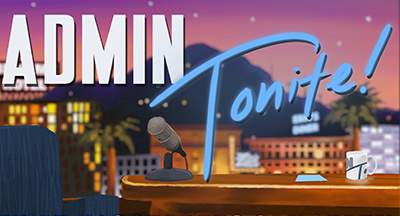
Your hiring process—even from the initial job posting—tells applicants a lot about your culture, processes, and responsiveness.
Does your process tell your district’s story the way you want people to hear it?
Culture
Legal requirements for job postings take precedence over tone, but how the audience views your advertisements can give them clues into your culture.Are your job postings upbeat?
If your job postings are just a laundry list of tasks, inject some personality in there! The way your team talks about work and invites others to join their work team can be a great measure of culture for a new hire.
Where do you post?
Where are your candidates looking? This is a straightforward question to ask during the new hire process. Once you know where most candidates look, take the opportunity to make some improvements. And once that source is looking ship-shape, branch out to where you’d like to land some new interest, including social job sites, workplace review sites, and other digital outlets.
Do your postings answer questions about the role and the setting?
Top-performing candidates are looking for places to set down strong roots and grow, so include leadership opportunities. If challenges exist in the upcoming role, be open about them as much as is appropriate (maybe saving some nuance for conversations). If a position is brand new, add that too. Transparency is important.
Does your careers page include your district’s history, points of pride, local landmarks, current branding, vision, and mission?
Your community is an extension of your district, especially for candidates who are relocating. There’s no need to reinvent the wheel, but link out to a local chamber of commerce, parks and recreation, and other local gems. Candidates will take stock of these community attributes during their job search.
Your district’s brand and defining messages can also offer culture clues for new hires. Include your claims to fame, links to your social media, and other branding cornerstones right on your careers page for easy perusal.
Process
Process blindness happens to even the greatest teams, so it takes a keen and self-aware eye to audit from the inside. New hire surveys about recent hirings might sound helpful, but unless they’re highly anonymized or sent out well beyond the probationary period, results might skew a bit rosier than reality. It’s always nice to hear upbeat feedback, but the honest and constructive criticism is hard to come by from an excited new hire.Measurable questions can kick off the analysis.
How long does hiring take, from posting to departmental onboarding?
Backtrack through a few recent hires to take stock of time stamps of your team’s actions and the new hire’s actions. Map the general timeline of an average new hire journey. If possible, compare it to other districts’ hiring processes—particularly since these neighboring districts may be vying for the same applicants.
Do applicants receive an agenda or timeline, so they know what to expect?
A culture of transparency starts early. This also keeps your team accountable and informed. Candidates will appreciate an itinerary of next steps, and it will cut down on calls to the main office asking if a decision has been made.
What sort of automation is in place?
Even small tasks add up to hours spent on data entry and management. Automation not only saves your staff valuable time they can use to focus on other tasks, it also guarantees all applicants enjoy the same high-quality pre-hire experience. The hiring process is highly regulated, and automation can simplify those complicated processes while ensuring compliance.
Portal communication with email notifications
The portal gives everyone a secure, central location to communicate within, but backup notifications sent to a regular email address ensure that nothing is missed along the way. There’s no way to guarantee every applicant is willing to download a brand-new app for a career portal, so ensure web support on mobile is up to industry standards. Ask applicants to add your email address to their safe sender’s list to bypass any spam filters.
One-way interviews
This high-tech HR strategy can cut down on the hours spent fielding initial interviews. Learn the ropes and decide if it’s the appropriate move for your culture. A tech-savvy district usually has little to fear, and in fact, those who object to tech-driven applicant engagement might self-select out anyway.
Follow-up for candidates not moving forward
The portal turns the time-consuming, but still important, task of following up with a decline into an automated process. Candidates still get closure, but your team can focus on the candidates still in the hiring pool.
Retaining documentation
Document retention laws cover not only successful candidates, but applicants who aren’t hired.Plan to keep a non-hire’s application for one year, and you may want to include interview notes. It’s the law in many places, but it’s also a good failsafe in case your new hire doesn’t work out.
New hire applications need to transfer to the employee personnel file, since pre-employment documentation needs to be retained along with employment documentation. Save staff time on manual entry by ensuring hiring systems flow freely into employee records.
Security and backups for hiring documentation can be lumped in with other HR documentation. What’s your current backup process? There’s never a better time to reevaluate in case of a ransomware attack.
Data mining can help you identify trends among your current high-performers and form a stronger hiring team. Create reports to look for trends in educational background, certifications, skills, or even which department managers have the best track record for hiring.
Follow-up resource: Technology + strategy
Take a deep dive into the way tech and strategy blend to improve hiring.WHAT'S NEXT FOR YOUR EDTECH? The right combo of tools & support retains staff and serves students better. We'd love to help. Visit skyward.com/get-started to learn more.

|
Erin Werra Blogger, Researcher, and Edvocate |
Erin Werra is a content writer and strategist at Skyward’s Advancing K12 blog. Her writing about K12 edtech, data, security, social-emotional learning, and leadership has appeared in THE Journal, District Administration, eSchool News, and more. She enjoys puzzling over details to make K12 edtech info accessible for all. Outside of edtech, she’s waxing poetic about motherhood, personality traits, and self-growth.




